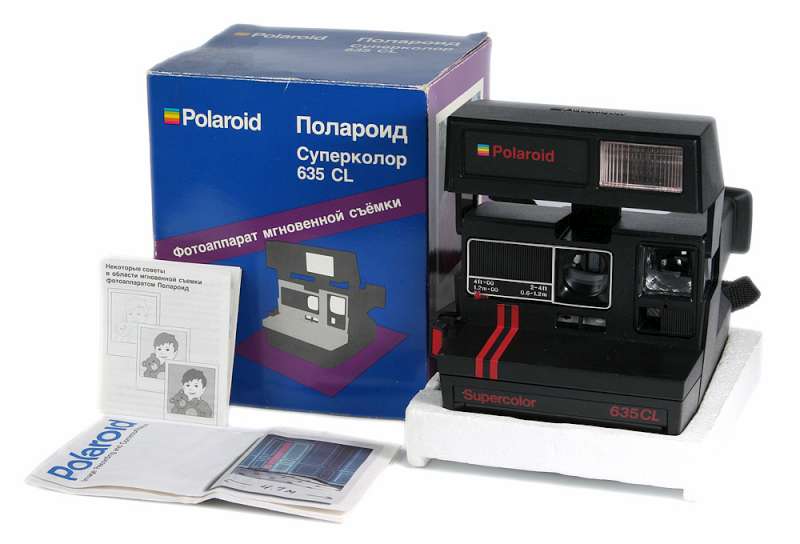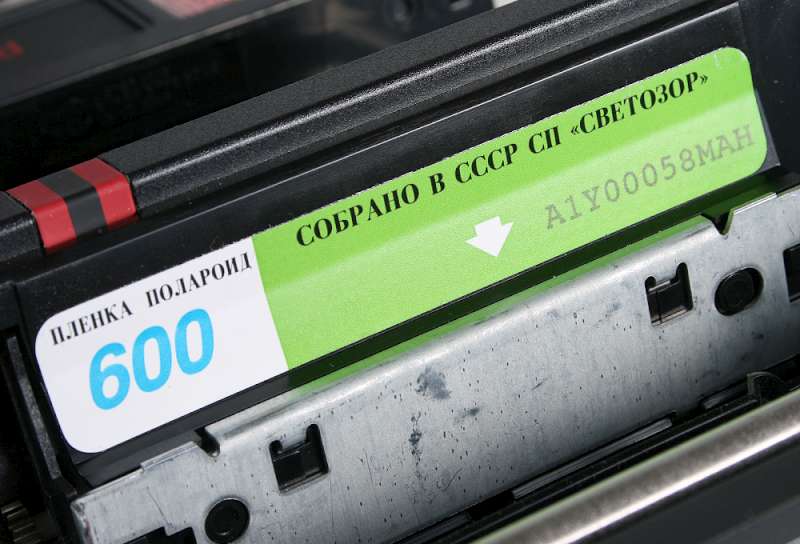The following materials and images are courtesy of Andrey Klemin of
www.klemin.ru
Translation and summary of this article is a result of an email correpondense between myself (Vladislav Kern) and Andrey Klemin on this topic. All of the information comes from Andrey Klemin's research.
A little bit about Svetozor:
SP(Sovmestnoye Proizvodstvo - Joint Enterprise) "Svetozor" or also called SP "Svetozor-Polaroid" was founded 1989 and ceased its existence in 1999.
Founders of SP "Svetozor":
1. Polariod Europe B.V. (49% share)
2. PO "Baltiets (former military factory in city of Narva, Estonia. Bankrupted and reorganized in 1993)
3. PO "Signal" (in Obninsk, not far from Moscow, currently it's OAO "Priborvniy Zavod Signal")
4. Moscow NII VNIIRT (Scientific Research Institute of Radio technology)
Business plan of SP Svetozor had accounted for an assembly of 350,000 cameras in duration of 6 years. On "Signal" itself, there was an article mentioning an assembly of major components for these Polaroids in quantity of 1 million pieces.
At press conference in 1995 representative of Polaroid states that camera production has reached 200,000 units a year. At that time PO "Baltiets" already got out of the SP and turned over its 13% of shares to Polaroid.
At the same time the import numbers of Polaroids into former-USSR was about 1 million units a year. It is possible to conclude that total production of Polaroid cameras by SP Svetozor was between 1 and 2 million units.
All of the Polaroids mass produced by Svetozor were exact clones of western cameras.
Based on the existing data we can safely assume that there were at least 2 major variations of these cameras:
1) Polaroid 635 CL
2) Polaroid 636 Closeup (more rounded and modernized body design and the model that was heavily mass-produced in Russia)
There is no conclusive data about the number of cameras produced or the models, and this information would be very hard to find, considering the bankruptcy of Polaroid itself and the chaotic collapse of the affiliates and representative agencies in Russia..
As cameras themselves go, these were the models made for quick and mass production, it almost seems that the 636 Close up model does not contain a single screw in its design, everything is based on plastic clips and snaps. The construction is simplified to the max and optimized for the assembly line. It also seems like Svetozor was only assembling these Polaroid from parts manufactured abroad, since the all parts inside are obviously not Russian made. Even most of the boxes were not even printed in Russia, with any kind of Russian writing completely absent.
Main difference between the UK and the Russian version is the paper label by the cassette slot that either says "Sobranno v Rossii" or sometimes in English - "Assembled in Russia". All the UK counterparts has "Made in UK" embossed into the plastic. Very often in Svetozor versions any kind of indication that it was assembled in Russia simply does not exist. That's why without really opening up the camera it's almost impossible to say where it was made - such is the case with a lot of these mass market models. All other writings and logos are identical to the western models except for a few nuances which also exist, by the way, between the non-Russian models themselves. Beside the regular instruction manual and documentation that was bundled with the camera - a Russian manual was also packaged usually consisting of a single sheet of paper.

Assembled in Russia 635CL with box and manual

Label on cassette slot on 635CL

Writing on the back panel of 635CL.

635CL in 2 variations - UK on the left, Russian on the right.
(UK version in picture has retracted lens, both cameras are identical lens-wise)

Boxes for 635CL, UK on the left, Russian on the right.

Writing on the box for Russian 635CL.

Model 636 Closeup. Russian on the left, UK on the right.

Back panel of Russian 636.

Back panel of UK 636.

Label on cassette slot of 636.
